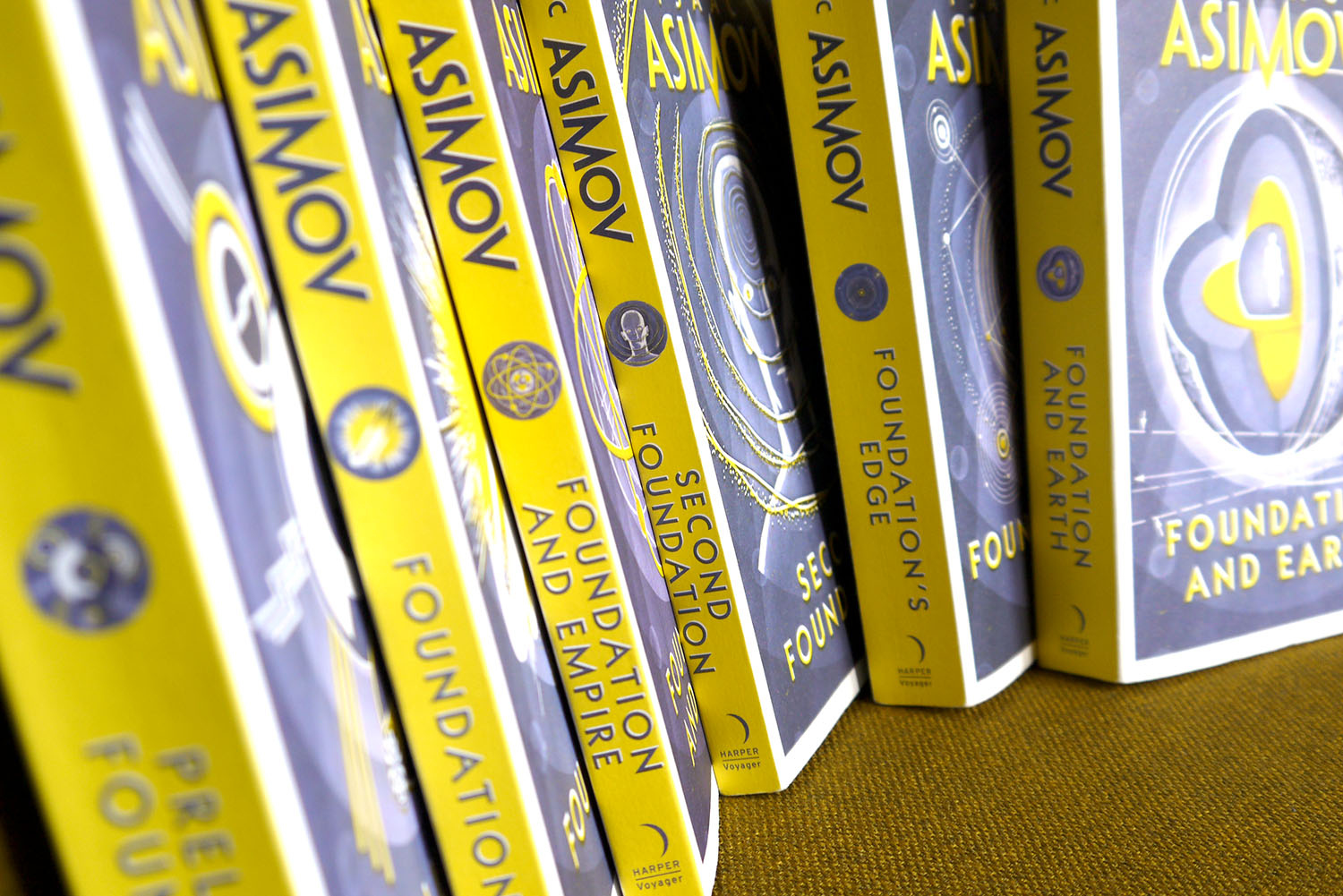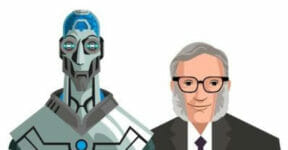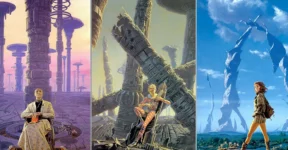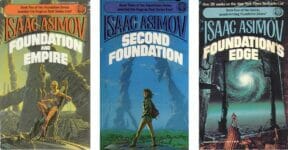A prequel series of Foundation trilogy consists of two books—the first of which is Prelude to Foundation, published in 1988. While the volume comes late to the party (about 37 years after the first book), it chronicles the early beginning of Isaac Asimov’s history of Hari Seldon, a major character who sets the story in motion.

The novel Foundation kicks off in the year 12,068 Galactic Era, whereas the events in Prelude to Foundation start in the 12,020 Galactic Era. Hari Seldon is not yet an established mathematician, but he is carving his way to becoming the greatest mastermind of a new galactic civilization.
The Story
Backed by hyper-scape travelling technology, humans have colonized the Milky Way Galaxy and established a mighty Galactic Empire under the oppressive Emperor Cleon I. The territory is comprised of millions of worlds with a population of more than 500 quadrillion people. Anybody can say the empire is at its peak power, but, it only hides countless governmental failures behind every political and economic mess.
A brilliant young associate professor named Hari Seldon from Helicon arrives at Trantor, the Galactic Capital, to attend a mathematical convention. He is about to deliver a presentation about the possibility of using math to predict the behavior of a large society. It is a new field of study that combines history, complex math, and social science to determine a specific behavioral pattern or the tendency of a civilization spanning centuries into the future. Called “psychohistory,” Seldon’s theory might be possible and ideally utilized to help the empire craft disaster-prevention policies.
Emperor Cleon takes notice and somehow sees an unexplored potential in psychohistory. During a short interview with Seldon following the presentation, the emperor is not much interested in the scientific details of psychohistory but he insists on capitalizing on the “fortune-reading” nature of psychohistory to gain political advantages. Statistical prediction can be an effective tool to direct the masses.
While the emperor’s idea might not be entirely out-of-place politically, Seldon is terrified by the prospect of psychohistory being used for the purpose of manipulating galactic society. Still wondering how to advance his theory, Seldon takes a stroll to the Imperial District where he stumbles upon a reporter named Chetter Hummin. Little does Seldon know that his life is about to take a dramatic turn, sending him into the center of a centuries-long conflict across the empire.
According to Hummin, Seldon’s life is in danger: the emperor First Minister Eto Demerzel is hunting him down. He offers help to further develop Seldon’s study of psychohistory in relative safety thanks to his vast contacts in the capital. Seldon accepts the offer and later determines that even a relatively small group sample (as opposed to the entire population of the empire) might be enough to advance his study. The sample population must be from an old world, preferably the origin of humans, with robust historical records.
Seldon theorizes that the Mycogen District is the perfect place to start. Unlike most other districts in the empire, Mycogen still abides by fundamentalist practices in which the citizens are mostly “de-individualized.” Citizens don’t have first names; only clan names and numbers. Meanwhile, in the Dahl District, the proletariat dominates society. According to the Mycogenians, their home planet “Aurora” is the original world, and they mention creatures called “robots” that supposedly do not exist in the empire. Those in Dahl give a conflicting account. They say “Earth” is the true origin planet and that Aurora is the archenemy.
Although Seldon is still unable to draw any conclusions regarding the human origin, he now knows that Trantor features just the right kind of cultural diversity to be used as a case study for psychohistory. Seldon is then kidnapped by Rashelle, the Mayor of Wye, who has long been plotting to overthrow the emperor. Demerzel puts an end to the coup attempt before admitting to Seldon that he actually is a robot named R. Daneel Olivaw with the psychic ability to manipulate human minds. To add to the surprise, Eto Demerzel and Chetter Hummin are only disguised. Olivaw’s real purpose is to encourage Seldon to develop psychohistory and put it to good use for the sake of humanity.
We think there is an obvious difference in storytelling style between the Foundation trilogy and the first prequel. If the trilogy uses the journey of society across centuries as the main plot point, Prelude to Foundation focuses heavily on Seldon’s actions as an individual. He is the true protagonist here, being the center of the story and dealing with all sorts of personal conflicts as his journey continues. Also, the first prequel only covers a short period of time. Isaac Asimov takes full advantage of Seldon’s journey in Trantor to deliver both minor and major details to keep the plotline organized and easy to follow. It is a good thing the author uses an already-developed character to preserve the sense of continuity within the series as well.
Have you read Prelude to Foundation? Do you think the structure and storytelling differences serve the series well? We’d love to hear from you.
Other things you might want to know:
Who are the main characters in the novel?
- Hari Seldon, the mathematician developing psychohistory.
- Cleon I, the Emperor of the Galactic Empire.
- Chetter Hummin, the reporter who helps Seldon escape pursuit by Imperial’s personnel.
- Eto Demerzel, advisor to Emperor Cleon.
- R. Daneel Olivaw, a robot with psychic ability.
- Dors Venabili, a history professor who helps Hummin protect Seldon.
There are also some important minor characters such as Mother Rittah (who tells Seldon about Planet Earth) and Yugo Amaryl (an aspiring mathematician with a great interest in psychohistory).
How is it connected to the “Robot” series?
Chetter Hummin and Eto Demerzel are both alternate “human identities” of a robot named R. Daneel Olivaw. In the novel, Olivaw—a mechanical entity—has strong inclinations or is perhaps hardwired to prevent harm to humanity. Such an inclination conforms with Isaac Asimov’s Three Laws of Robotics mentioned in his “Robot” series.
Is there a second prequel book?
The second and last book in the prequel series is titled Forward the Foundation.
Check out other articles by month:







